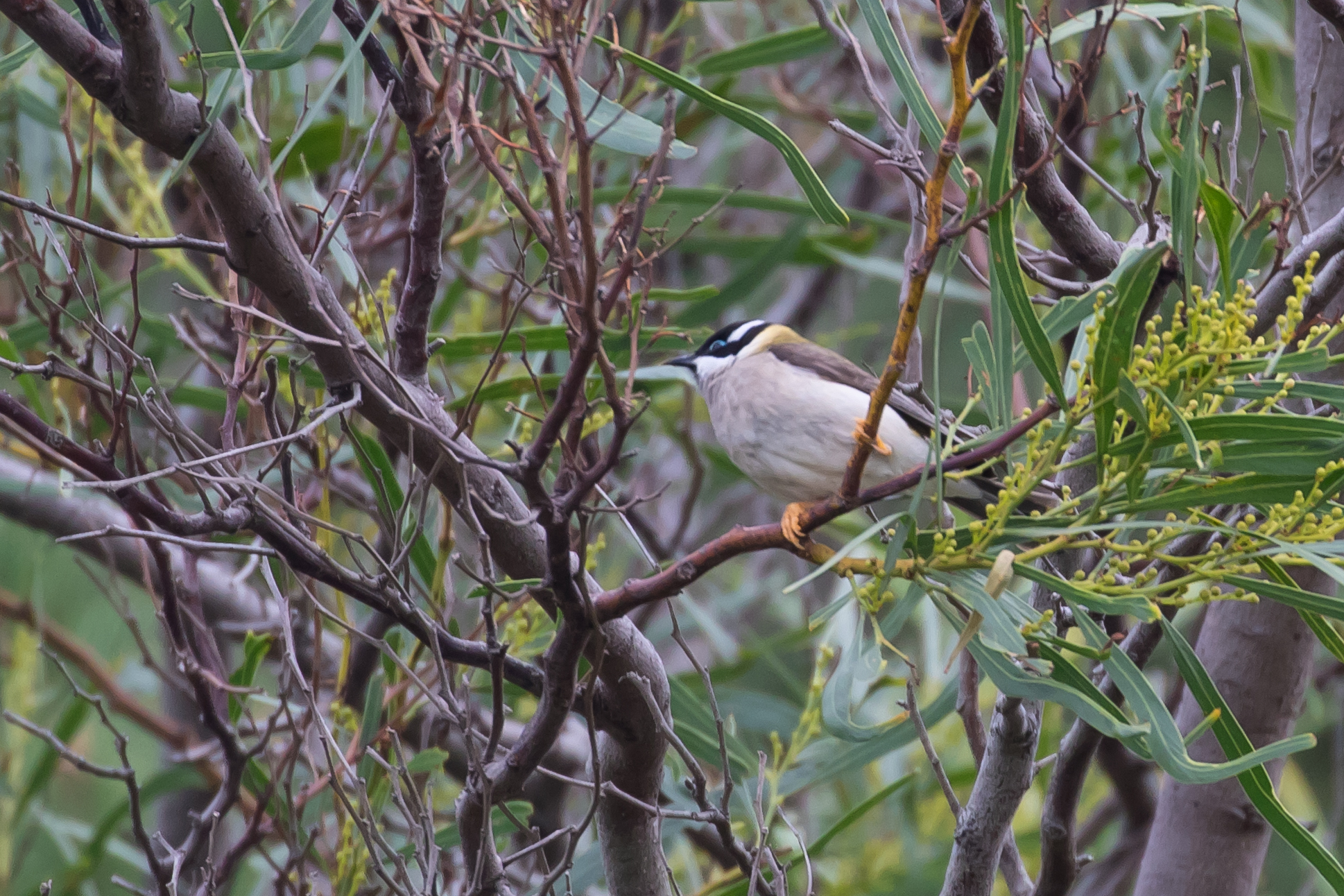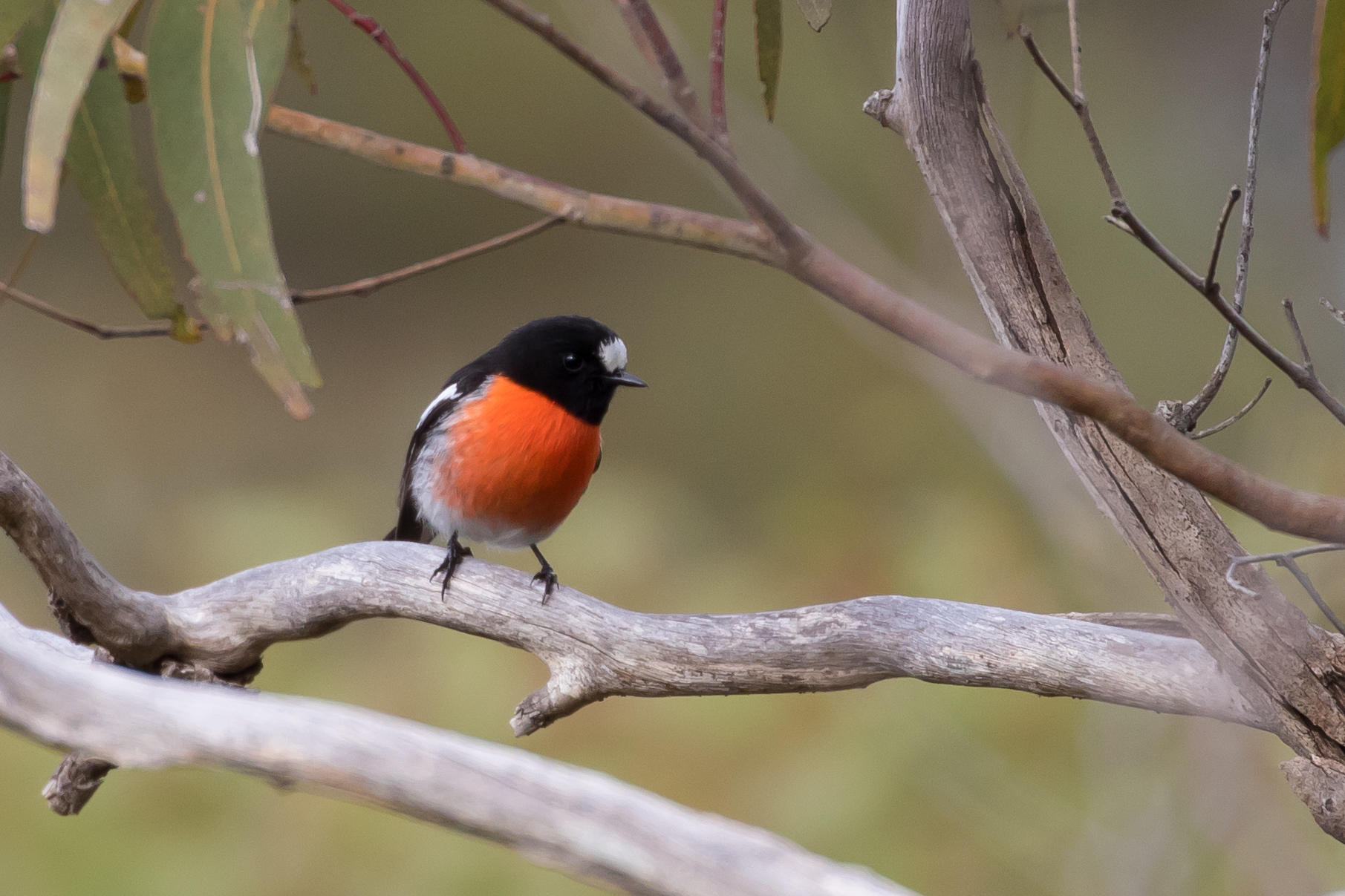It’s not often I have a whole day (or most of it at least) at my disposal for birding, but yesterday (Sunday 24th June) the family decided they’d prefer most of Sunday without me! Go figure ;-)… Originally harbouring thoughts of Brookfield or maybe even a mad 3hr dash to Gluepot, I changed my mind as I went to bed on Saturday, settling on a lie in and a less ambitious excursion to explore a few sites south of Adelaide on the Fleurieu Peninsula that I have only rarely visited.
Departing at around 8, first stop an hour later was Clayton Bay, a pretty settlement on the southern edge of Lake Alexandrina, with fabulous views across to Hindmarsh Island. My purpose here was to connect with a bird that has stubbornly refused to be in the same place as me for the last 5 years. My only other connection with Black-chinned Honeyeater was in Victoria in 2013. They have become increasingly rare in SA, but a small population hangs on, dotted about in places mostly south of Adelaide on the Fleurieu. Clayton Bay hosts one of the few reliable colonies and various ebird “needs alerts” from here had reminded me of this glaring hole in my SA list.
I tried various likely-looking spots around the village over an hour or so until eventually I heard the distinctive chirping and found a small group of 3 (maybe more) birds not far from the Village Hall. They stayed high up in the tops of the sugar gums so there were no decent photo ops and I had to settle for a record shot.

While looking for the Black-chinned I racked up quite a few other species, including a pair of Australian Hobby on a mobile phone tower just outside the township. Ebird list.
Next up, I paid a visit to Scott Conservation Park, a beautiful stand of Stringybark and Peppermint Box gums dotted with Grasstrees in the understorey (checklist here). A Tscherp-tscherp alerted me to the presence of a White-naped Honeyeater and soon after a chirping flock of Brown-headed Honeyeaters flew over, my third Melithreptus of the morning. The highlight here was the presence of numerous Elegant Parrots.




Final stop for the day was Cox Scrub. My first and only visit to the site was in early May 2013. I’d read about the spot in the context of Birds SA field trips, and was aware that Chestnut-rumped Heathwren and Southern Emu-wren were the star birds, both of which I needed at the time. I duly arrived that afternoon 5 years ago to the site of charred remains of a park, smoke rising from still-glowing embers on the ground. A “controlled burn” from 3 days earlier had got out of control (nice work DEWNR) and ripped through 90% of the park, obliterating the Emu-wren population in the process. Luckily the Heathwrens clung on in the SE corner, the only bit of the park not to be razed.
Today it was gratifying to see how brilliantly the scrub has recovered. Though the Emu-wrens have not returned and probably never will there was a nice array of birdlife here despite the late time of day. Ebird list.




